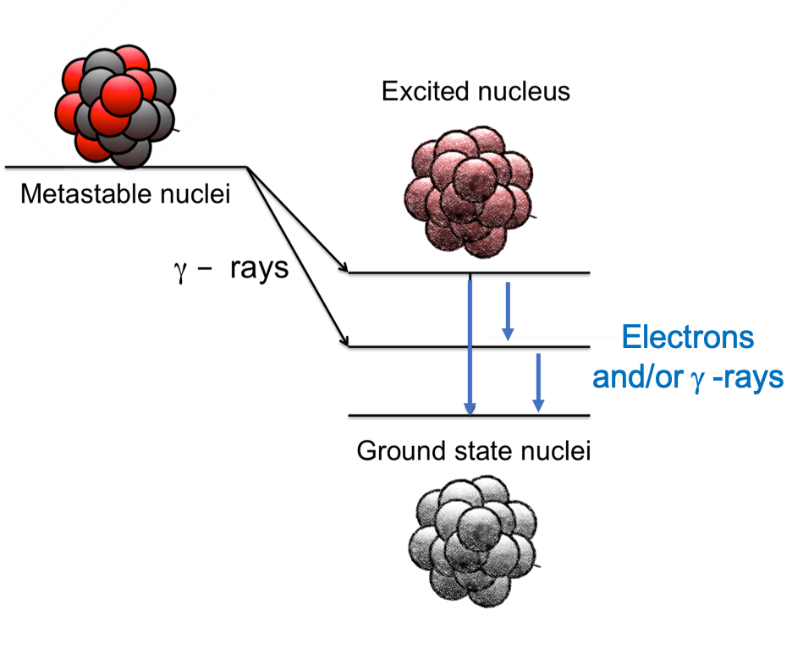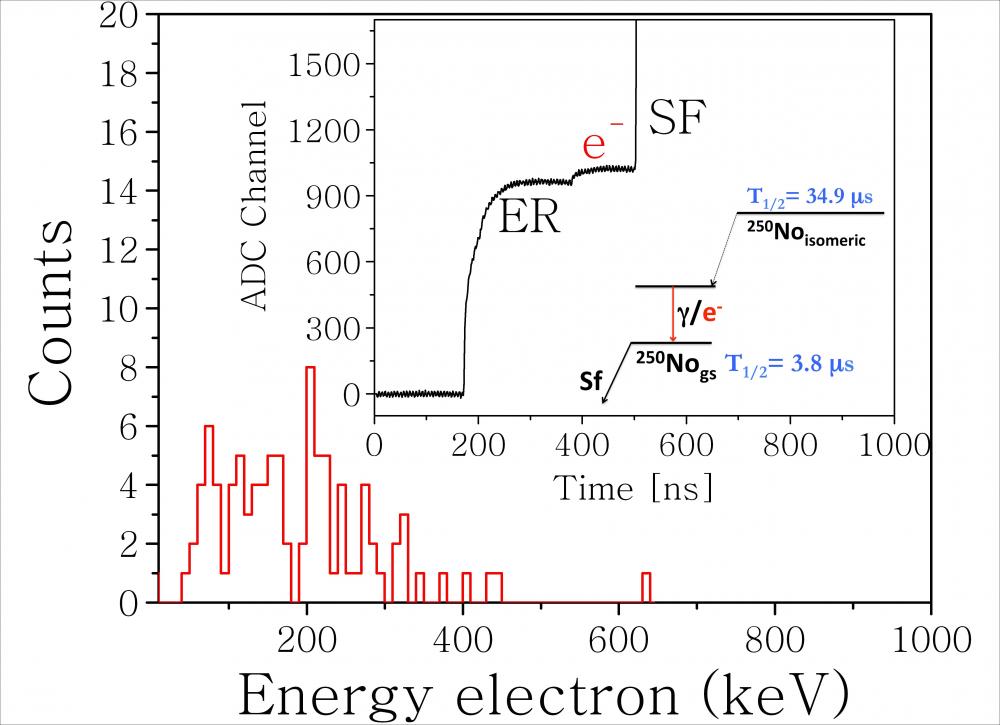The simple question “Where does the Periodic Table end?” has excited scientific interest for a long time. In this context, understanding the structure of the heaviest nuclei, and through it their stability, is of major importance. A decade ago, there was no promising path to tackle this scientific quest. And yet, in the past few years, a collaboration composed of physicists coming from Irfu/DPhN, Jyvaskyla (Finland), GSI (Germany) and Argonne (USA) applied a newly developed technique relying on high performance accelerators and state-of-the-art detectors to investigate the isomeric (long-lived) states in heavy nuclei[KS1] [2] . It has triggered a renaissance in heavy ion elements science. New focal plane detectors equipped with digital electronics has been for the first time extended to short-lived states[KS3] in heavy nuclei, allowing the detection of very close events and very short half-life (few µs). This opens new perspectives as to date, the heaviest element found is Oganesson with a half-life of 0.58ms.The results have been published in the Physical review C [1].
Isomeric states: a key to understand the structure of heavy nuclei
Atomic nuclei are quantum bound states whose components, the protons and the neutrons can occupy various energy levels. When they fill up the lower levels, the nucleus is in the less energetic state, called the ground state. Still, they may “jump” on higher energy levels, yielding more energetic configurations of the nucleus named excited states. If this excited state is long-lived, it is called an isomer[KS1] [2] . These isomers are metastable. A typical lifetime for a nuclear state may be a few picoseconds, but isomers can survive for many orders of magnitude longer. Some isomers are known to have half-lives of seconds, minutes, hours, or even years. For example, the isomeric state in the Hafnium 178 (composed of 72 protons and 106 neutrons) has a half-life of more than 30 years.

Figure 1: Nuclear chart in the region of heavy nuclei. Each nucleus is represented by a square as a function of the number of protons (Z) and number of neutrons (N) (https://people.physics.anu.edu.au/~ecs103/chart3d/).
The existence of isomeric states originates from strong differences in the properties (for instance different shapes) between the isomeric state and lower lying ones. Therefore, the study of isomers reveals itself crucial to pin down the structure of heavy nuclei.

Figure 2: Sketch of a de-excitation process of a nucleus produced in its isometric state (metastable state) towards the ground state via the emission of gammas or electrons
A nuclear reaction can produce nucleus in its ground state or in its isomeric state. In the latter case, most of the time, the isomeric state does not decay directly toward the ground state. It will take a path populating intermediate excited states before reaching the ground state (Figure 2). The various decays along that path emit particles such as electrons and gammas, which can be detected. Once measured, one can deduce, from these emissions, information on the heavy nuclei structure. If not stable, the ground state can then decay through various mechanism (fission, beta decay,…).
New electronics for breakthrough measurements of isomeric states
For the last few years, the use of digital electronics in experimental areas of nuclear physics has kept growing. What is the purpose of digital electronics? It allows to sample the signals coming from a detector, a silicon detector for example, with a typical rate of 50-100 MHz. Once sampled, specific software algorithms are able to separate events that happen very close in time.
Exploiting these new advances, physicists from Irfu/DPhN and Jyväskylä (Finland) were able to study for the first time the decay spectroscopy of 250No (Nobelium composed of 102 protons and 148 neutrons), one of the rare breed of very heavy nuclei with an isomeric state living considerably longer than its ground state.
The method used for hunting isomers can be described as follows. First, the collision between a beam and a target produces many nuclei, among them those of interest (here 250No both in ground and isomeric states). The latter are selected from the background (unwanted transfer, fission products and the un-reacted beam particles) through a separator (figure 3).

Figure 3: The separator RITU at the accelerator facility of Jyväskylä. The beam arrives on the right; 250No nuclei are created and then filtered in the separator RITU (magnets and quadrupoles); finally their decay is studied on the left.

Figure 4: Spectrum showing the energies of the detected electrons. Insert: electronic signal measured in the DSSD, first the reaction product (Evaporation Residue, ER) is implanted in the DSSD, second the electrons coming from the decay of the isomeric state are detected, third the fission products (Spontaneous Fission, SF) are seen in the DSSD.
The selected nucleus is implanted in a pixel of a highly segmented double-sided-silicon-strip detector (DSSSD) at the focal plane of the separator. If the nucleus is in an isomeric state it will survive for some time before decaying to a lower-lying state. This decay will follow the path presented in figure 1, thus several electrons will be detected together in coincidence. Afterwards, the 250No ground state will also decay, fissioning into two lower-mass nuclei. This experimental method, proposed by Graham Jones at Liverpool University, provides a very clean identifiable event sequence of:
All these steps happen in the same pixel of the DSSSD. This powerful method allows performing spectroscopy of the isomer decay (see Figure 4).
New results shedding light on heavy nuclear stability
Exploiting Jones method with the digital electronic allows to extract the lifetime of 250No ground state (t1/2 = 3,8 ± 0,3 μs) and isomeric state (t1/2 = 34.9-3.2+3.9 μs), highlighting that the lifetime of the isomeric state is longer than the one of the ground state. It is the first time that such a short lifetime of an isomeric state of a heavy nucleus has been measured. The longer half-life of the isomeric state compared to the ground state suggests that there is substantial fission hindrance due to the isomeric state, meaning that the nucleus gain in stability. This phenomenon has important consequences for the nuclear-structure models aiming to determine the borders of the island of stability of super-heavy elements.
This interesting property, found only in limited cases (i.e. Darmstadtium 270 composed of 110 protons and 160 neutrons) opens the possibility that we may more easily find new isotopes and super heavy elements by searching for their isomers. So, where does the Periodic Table end? What is the mass of the heaviest atomic nucleus? We still do not have clear answers, but following the recent experimental results we have an excellent chance of answering them in the near future.
[1] J. Kallunkathariyil et al., Phys. Rev. C 101, 011301(R) (2020).
Contact Irfu: Barabara Sulignano
• Structure of nuclear matter › Atomic nucleus
• Institute of Research into the Fundamental Laws of the Universe
